The King of Australian Coin Rarities, the Proof 1930 Penny
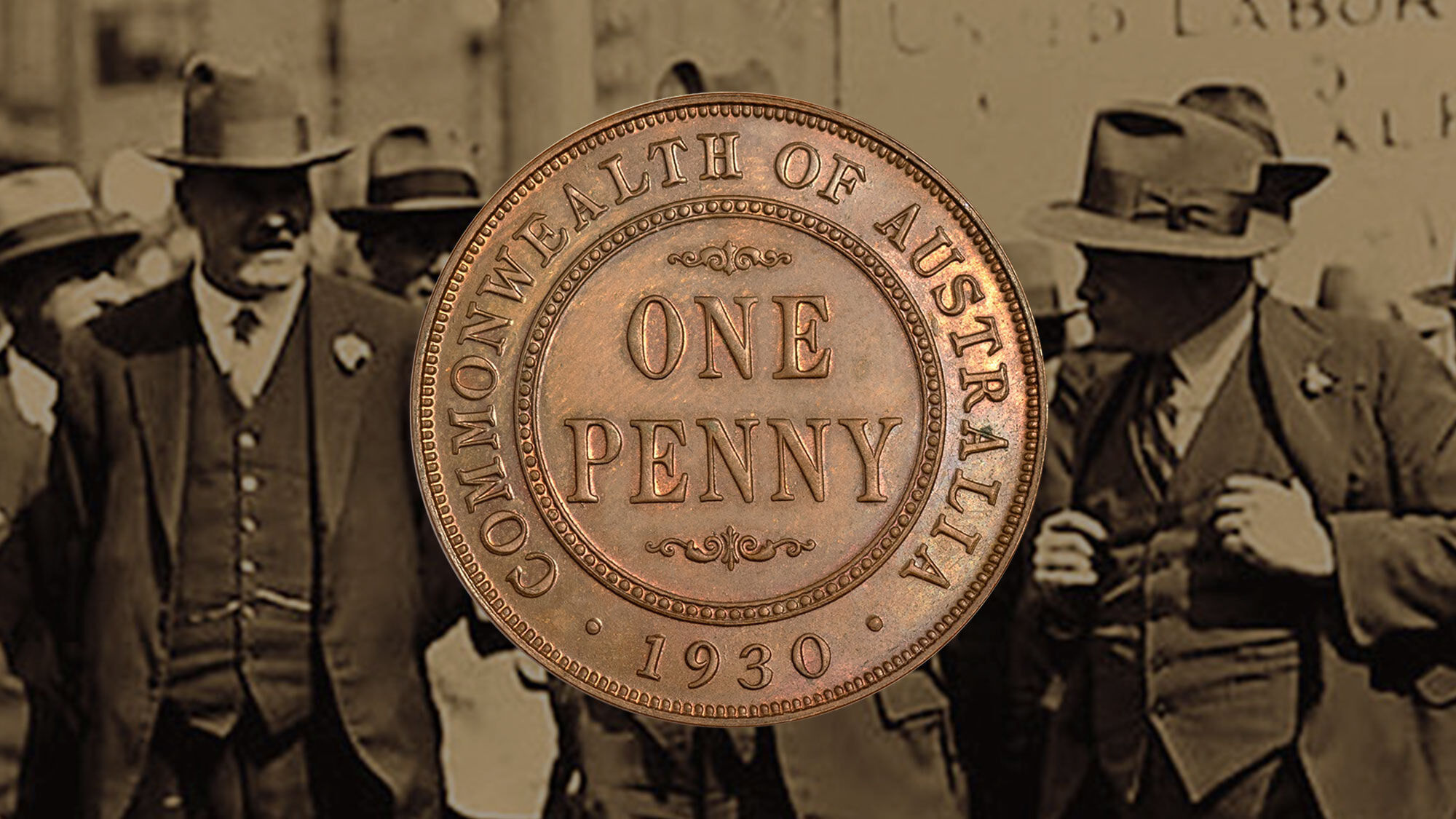
Australians just love their pennies. And there are options for collectors as to the strike of the penny. There are two choices.
Buyers can select pennies that were minted to be used in everyday commerce, the mintage determined by Treasury (generally in the millions), to meet the currency needs of the population. Most collectors opt to procure examples that have never been used or that show minimal signs of circulation, thereby ensuring maximum visual appeal. And all but guaranteeing rarity.
Buyers can also pursue pennies that were struck to proof quality as presentation pieces. Coins minted in very limited numbers, at the discretion of the mint master, created as numismatic works of art and never intended to be used. Coining perfection. Perfection in the dies, wire brushed so that they were razor sharp. Perfection in the design, highly detailed and expertly executed. Perfection in the fields, achieved by hand selecting unblemished blanks, polished to create a mirror shine. Perfection in the edges to encase the design, exactly what a frame does to a work of art. With proofs, buyers are guaranteed rarity.
The most prestigious proofs are those of rare date circulating coins. So the rarer the circulating coin, the higher the value of its proof counterpart.
As far as Australian circulating pennies are concerned, the 1930 Penny is the rarest. About one thousand five hundred coins were accidentally released into circulation making it our scarcest and our most valuable circulating penny.
The coin offered here is, a Proof 1930 Penny, minted as a presentation piece at the Melbourne Mint. It is a proof striking of Australia’s rarest circulating penny. And our most popular penny.
And that makes the Proof 1930 Penny a coin of the utmost significance. It is Australia's most valuable copper coin. And the world's most valuable copper coin of the modern era.
Official records attest that six Proof 1930 Pennies were struck at the Melbourne Mint, the coins destined for the mint’s archives and a few earmarked for influential members of the public.
The Melbourne Mint retained one of the six Proof 1930 Pennies for its archives and when the mint closed, the coin was sent to the Museum of Victoria where it is still held. An example was sent to the British Museum, where it is currently held. And an example was sent to the Art Gallery of South Australia where it also remains.
Three Proof 1930 Pennies made their way into private hands.
The three privately owned Proof 1930 Pennies are defined by a title that acknowledges a former owner. The ‘Madrid Collection’ Proof 1930 Penny, this coin. The ‘Syd Hagley’ Proof '30. And the ‘British Museum’ Proof '30.
Each Proof 1930 Penny is vastly different from the others, each coin possessing different qualities, with varying degrees of copper brilliance, reflecting the environments in which they were kept.
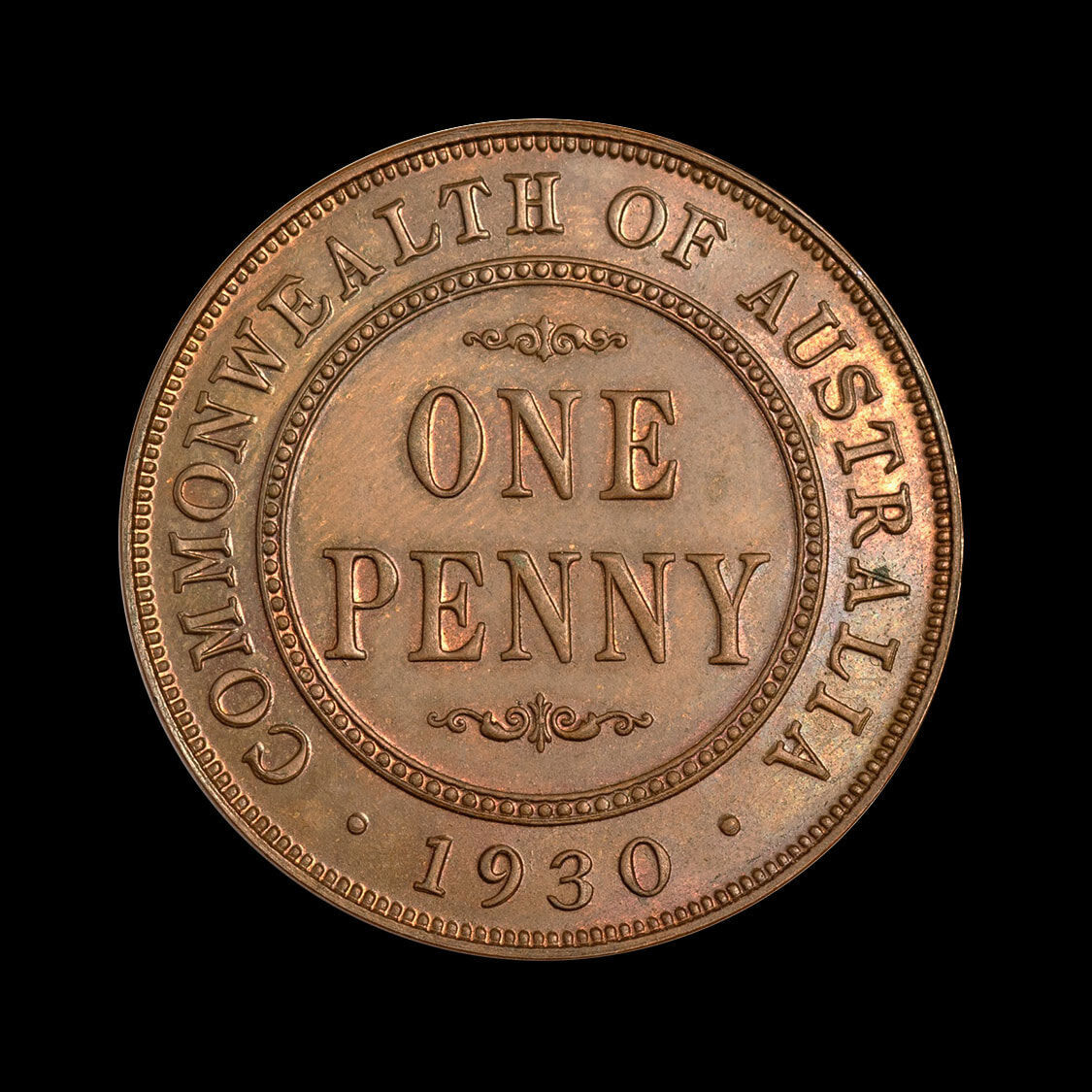
The reverse design of the Madrid Proof 1930 Penny is highly detailed. The underlying copper brilliance through the inscription around the edge of the coin, and the date 1930, and into the centre with its stated value of one penny is simply a magic touch that brings the coin to life.
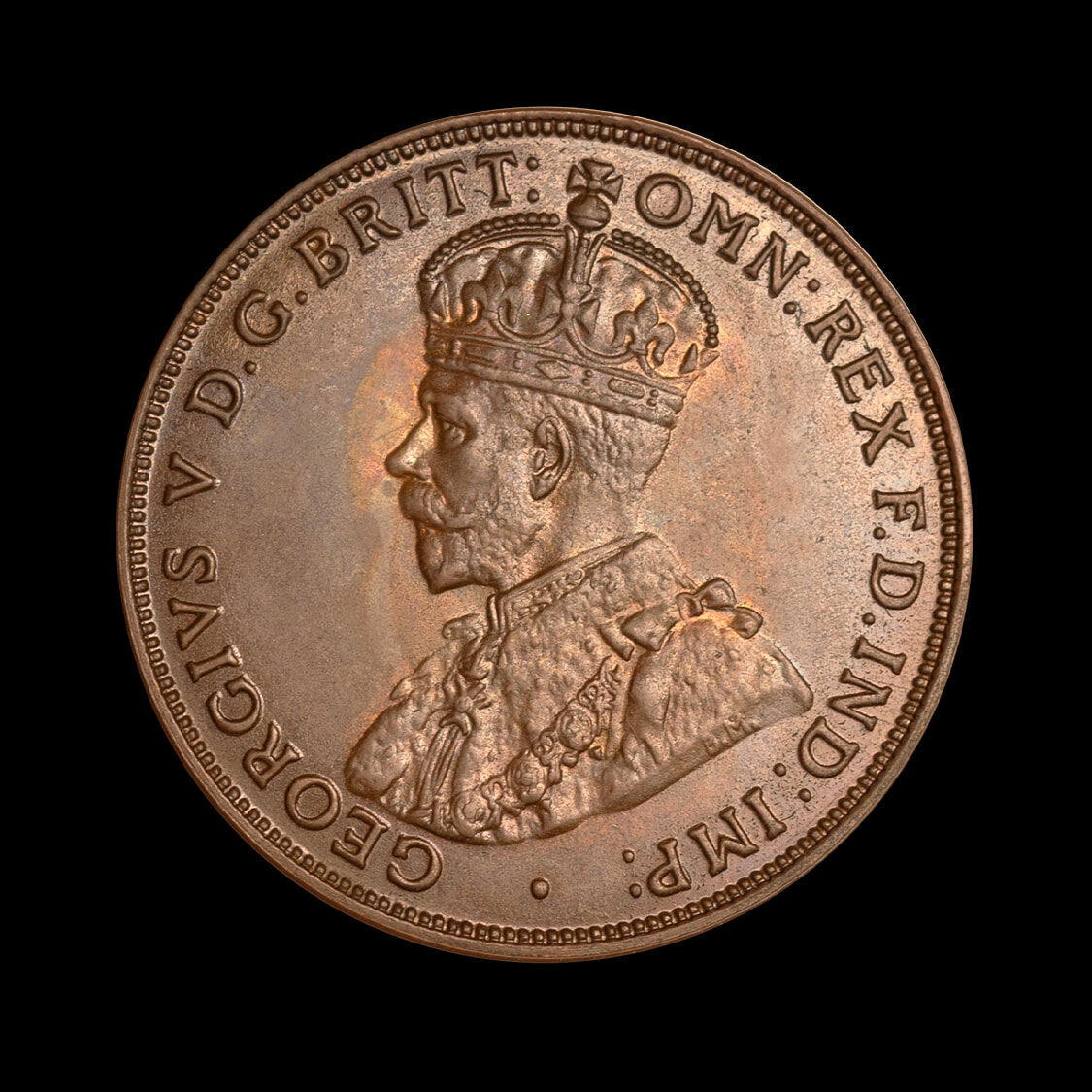
The obverse design of the Madrid Proof 1930 Penny also is highly detailed. Handsomely toned, the fields are like glass and are highly reflective. The edges are polished and also highly reflective. The edge denticles within the rim are pristine.
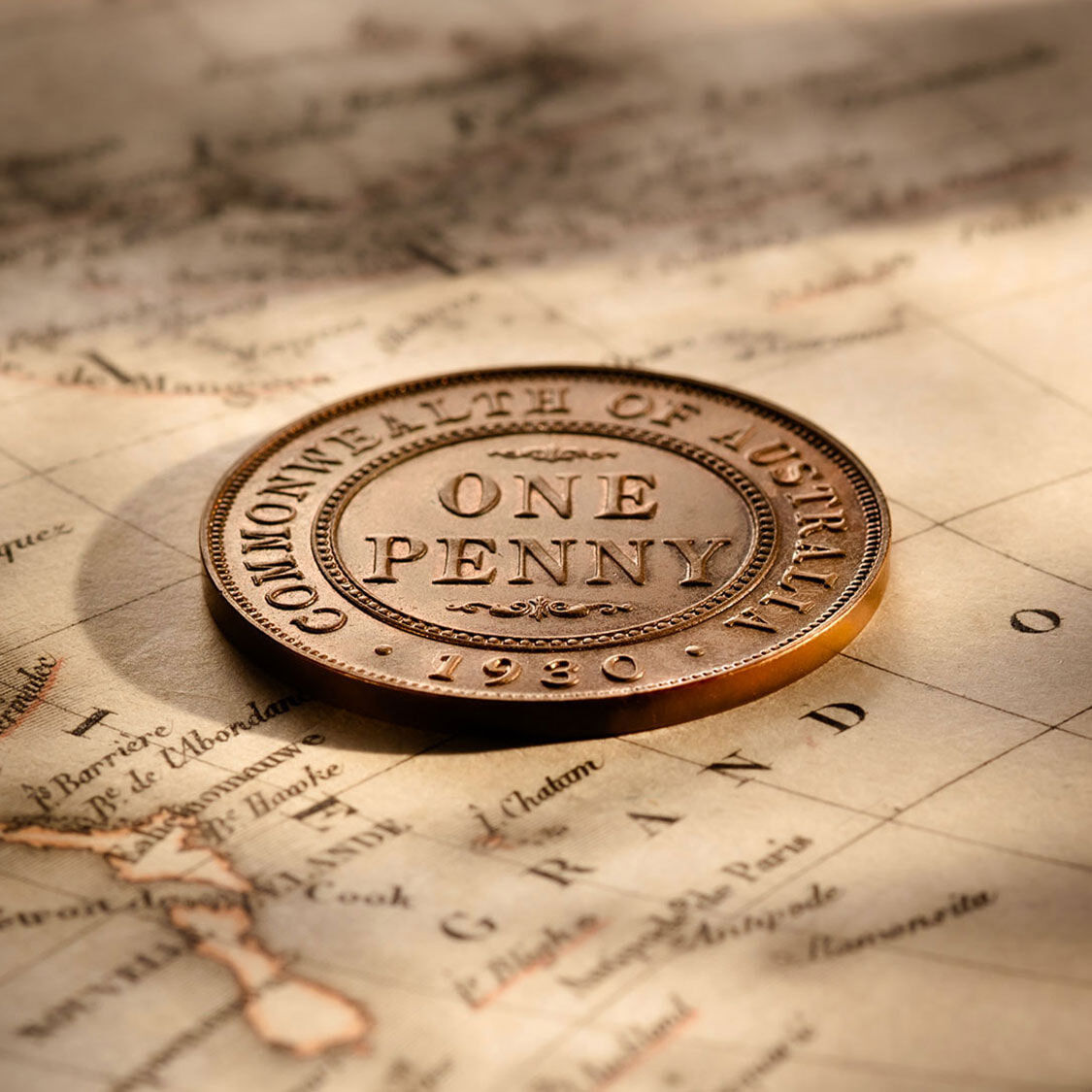
The Madrid Collection Proof 1930 Penny is back on the market after twenty-seven years.
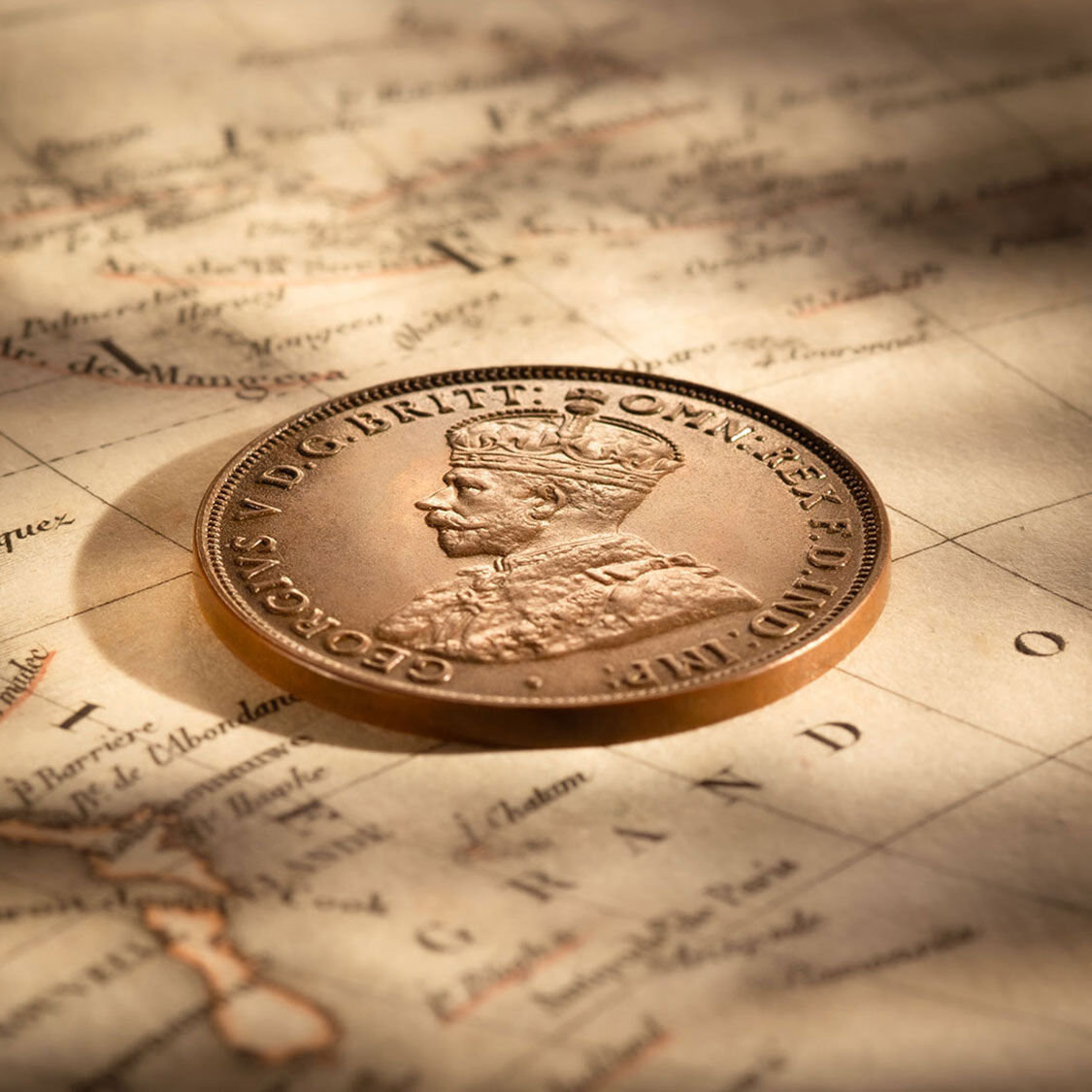
The Madrid Collection Proof 1930 Penny obverse.
The 1930 Penny lies at the very heart of the Australian coin industry.
Struck during the Great Depression, the 1930 Penny is a national icon, its star status making it our most popular rare coin. And one of our most valuable.
When the 1930 Penny pulses, the whole numismatic industry pulses. It is the coin that most collectors aspire to. Rekindling childhood memories. Or evoking family memories. A bequest to children or grandchildren.
The 1930 Penny is all things to all people and is the undisputed champion of the Australian coin market.
The 1930 Penny is an industry phenomenon, for in a market that is quality focused, the coin is keenly sought across all quality levels. And growth over the mid to long term has been significant, irrespective of quality.
The stardom that the 1930 Penny has attained was never planned. The reality is the coin stumbled into fame. A review of records at the Melbourne Mint confirms that apart from the six 1930 Pennies struck to proof quality, no pennies were struck for circulation in that year.
Many theories have been put forward as to the accidental minting of the 1930 Penny. One theory suggests that a few circulating strikes may have been minted at the same time as the Proof version, set aside and inadvertently issued years later by mistake.
The more popular explanation is also the more romantic. Mint policy dictated that the dies were prepared in readiness for the striking of a penny in 1930.
The Depression and the lack of economic growth meant that, apart from striking a small number of halfpennies and gold sovereigns, the Melbourne Mint became a tourist attraction. It is thought that a mint guide minted small batches of 1930 pennies for tourists as souvenirs of their visit.
That no one has a definite answer as to how it was minted, only adds to the romance and the mystery that has shaped the image and profile of Australia’s 1930 Penny.
The suspected mintage is about 1500 coins.
The 1930 Penny was not discovered until the 1940s, allowing at least a decade of circulation before collectors even knew of their existence. Which means that most of the 1930 Pennies had been handled, mishandled, potentially dropped, scratched, or rattled around in change.
With unemployment tipping 30 per cent in 1930, the notion that coins could be saved or kept as a collectible was nonsensical. Any coin that came into a family's hands was used.
So, all 1930 Pennies have undergone circulation, with the majority very well circulated and much used.
Dealers quickly responding to the discovery of the 1930 Penny by offering to pay up to 10/- for an example.
However, it was not until the 1960s that the 1930 Penny became a national symbol. Newspapers were instrumental in creating that image, television played a lesser role. Lists of Australian coins and their market prices and headlines such as “Have you cashed in on Australia’s coin craze yet?” and “A Penny could be worth £500” appeared in the 60s in the daily newspapers.
The nation’s coin market reacted in a frenzy as people rushed to find a 1930 Penny and cash in on an opportunity to make big money.
In 1964, the Sydney Sunday Telegraph published a guide to the latest prices on Australian coins. It was the first time that such a list had been published and, while most pennies were fetching a small premium over face value, the 1930 Penny was listed at £50. in Fine condition. (Today that same coin would be worth close to $25,000 to $30,000.)
By 1965, a Fine 1930 Penny had more than doubled in price to £120. By decimal changeover, the price had moved to £255 ($510), and the 1930 Penny had captured the imagination of collectors and non-collectors alike.
Before the arrival of decimal currency in 1966, no Australian could look at a penny without glancing at the date just in case it was the elusive ‘1930’. A product of the Depression, it was everyone’s chance to make big money fast.
Interest in the nation's soon to be superseded currency was spurred on when the population realised that undiscovered rare pieces might be withdrawn from circulation and melted down. Collectors keen to complete sets of all coins minted in Australia rushed to acquire the elusive pieces at rapidly escalating prices.
Nearly sixty years have elapsed since Australia began using dollars and cents and shelved the copper pennies and halfpennies, and the silver coins of florin, shilling, sixpence and threepence. Pennies are no longer found in loose change, but the backs of old couches or jars filled with old coins are still to this day routinely checked. Just in case.
© Copyright: Coinworks